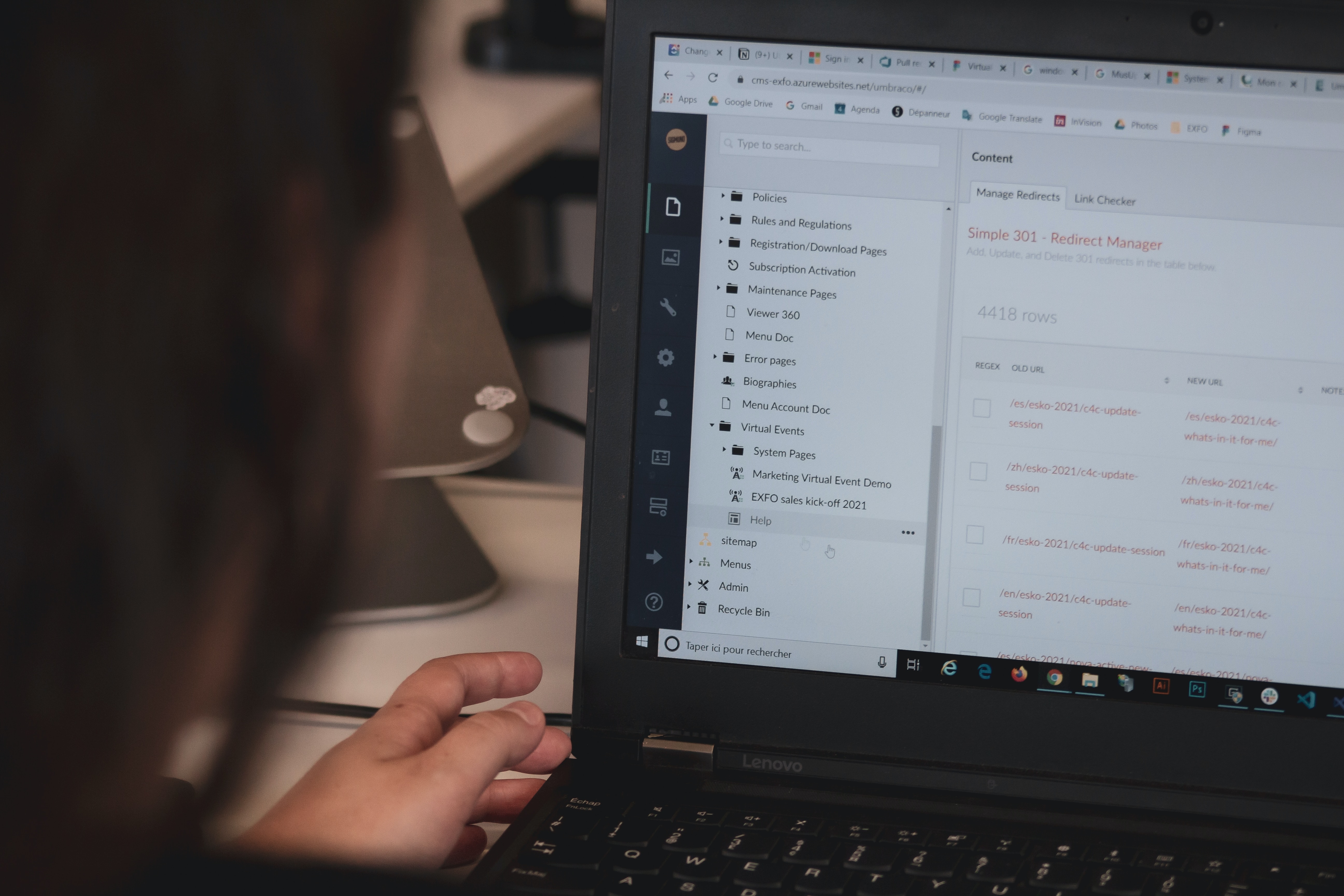A Guide to Efficient Website Management
by Syed Sibtain, System Analyst
Consider yourself the owner of a succeeding e-commerce website 💻. You must manage a large volume of material, which includes anything from product descriptions and customer reviews to blog articles and promotional banners. Managing all of these elements manually is not only time-consuming but also prone to errors. This is where a Content Management System (CMS) comes into play.
A Content Management System (CMS) serves as the backbone of a website, allowing us to properly manage and organize our information. It enables us to create, update, and publish web content even if we don't know how to code. This allows us to concentrate more on developing high-quality content and less on the technical parts of website administration.

The goal of this blog is to explore the world of CMS. We will explain what a CMS is, its benefits, and the issues it presents. We will also look at popular CMS available in the market.
What is a Content Management System?
A Content Management System (CMS) is a software application that allows multiple contributors to generate, update, and publish information in a user-friendly interface. Content in a CMS is typically saved in a database and shown in a presentation layer based on a set of templates, similar to a website.
A Content Management System or a CMS is typically composed of two main components: the Content Management Application (CMA) and the Content Delivery Application (CDA).
The Content Management Application (CMA) is a graphical user interface that enables users to design, create, change, and delete content on a website without needing to know HTML or CSS. It's similar to an online word processor whcih gives us the tools we need to create each webpage. The interface enables users to effortlessly upload text, images, videos, and other content to their website.
The Content Delivery Application (CDA), on the other hand, is the backend process that allows content management and distribution once it has been created in the Content Management Application. It takes the content we enter into the Content Management Application, stores it correctly in a database or file system, and makes it visible to our visitors. This means that it is in charge of how the content is saved, arranged, and eventually published on the website.
What's more, why should we use a content management system?
For managing the content of a website, a Content Management System (CMS) offers a number of benefits. Here are a few of the main advantages:
-
User-Friendliness: CMS platforms are designed to be simple to use, allowing persons with even a little technical knowledge to create and manage information.
-
Content Collaboration: CMS systems enable efficient collaboration among team members by providing structured workflows for content creation, design, approval, and publishing.
-
Customization: CMS solutions provide considerable customization possibilities, allowing us to adjust the design, layout, and themes of our website to our specific tastes and branding.
-
Cost and Time Savings: CMS eliminates the need to build a website from scratch, saving both time and money, as it streamlines content creation and publishing processes.
-
Scalability: CMS systems can effortlessly handle the growth of our website, making it easy to manage and organize large volumes of content and expand our website with new pages or sections.
-
SEO-Friendly: Many CMS platforms have SEO features to help us with chores like keyword management, metadata, title tags, and SEO-friendly URLs, which improve our website's search engine visibility.
-
In-Depth Analytics: CMS often contain analytical tools built-in that provide real-time insights into content performance, allowing us to analyze key performance indicators and make data-driven decisions to improve our content strategy.
The Most Common CMS Platforms for Website Management
Strapi: A flexible Headless CMS with internationalization, a media library, roles and permissions, and other features that are favorable to developers. It's well-liked across a variety of sectors and excellent for robust, developer-centric projects that demand seamless integration.
Sanity: The versatile and highly customizable, real-time headless CMS trusted by giants like Nike and National Geographic. Streamline content creation and delivery with ease.
WordPress: User-friendly and highly customizable, making it ideal for blogs, small businesses, and e-commerce.
Joomla: Known for flexibility, best for managing categorized content, requires some technical knowledge.
Drupal: Offers robust performance and security features, suitable for complex, large-scale websites, but may need technical expertise.
Challenges with CMS and How to Tackle Them
Security vulnerabilities are a concern with conventional CMS platforms like WordPress or Drupal, but we can mitigate them by considering a headless CMS to reduce server load and maintaining regular updates with security patches. Additionally, as our website grows, performance issues like scalability and speed become important. We can opt for a scalable CMS and implement a Content Delivery Network (CDN) to enhance site speed.
Conclusion
Managing a website in the ever-changing digital world has become a demanding activity, particularly when it comes to content generation and management. Content Management Systems comes into play here. A content management system (CMS) such as WordPress, Joomla, Drupal, Strapi, or Sanity can make this process easier by providing a user-friendly interface for content creation, editing, and publication. They provide several advantages, such as cost and time savings, scalability, and increased SEO exposure.
A CMS, like any other tool, may pose a few challenges, such as security vulnerabilities, performance issues, and complexity. However, with the correct knowledge and resources, these difficulties can be overcomed.
In summary, a CMS is a powerful tool that streamlines our website management, significantly improving efficiency and saving our valuable time. Whether we run a small business, maintain a blog, or oversee a large organization, a CMS empowers us to effectively and effortlessly manage our content. Stay tuned for our next blog, where we'll delve into how Strapi, a dynamic headless CMS works.